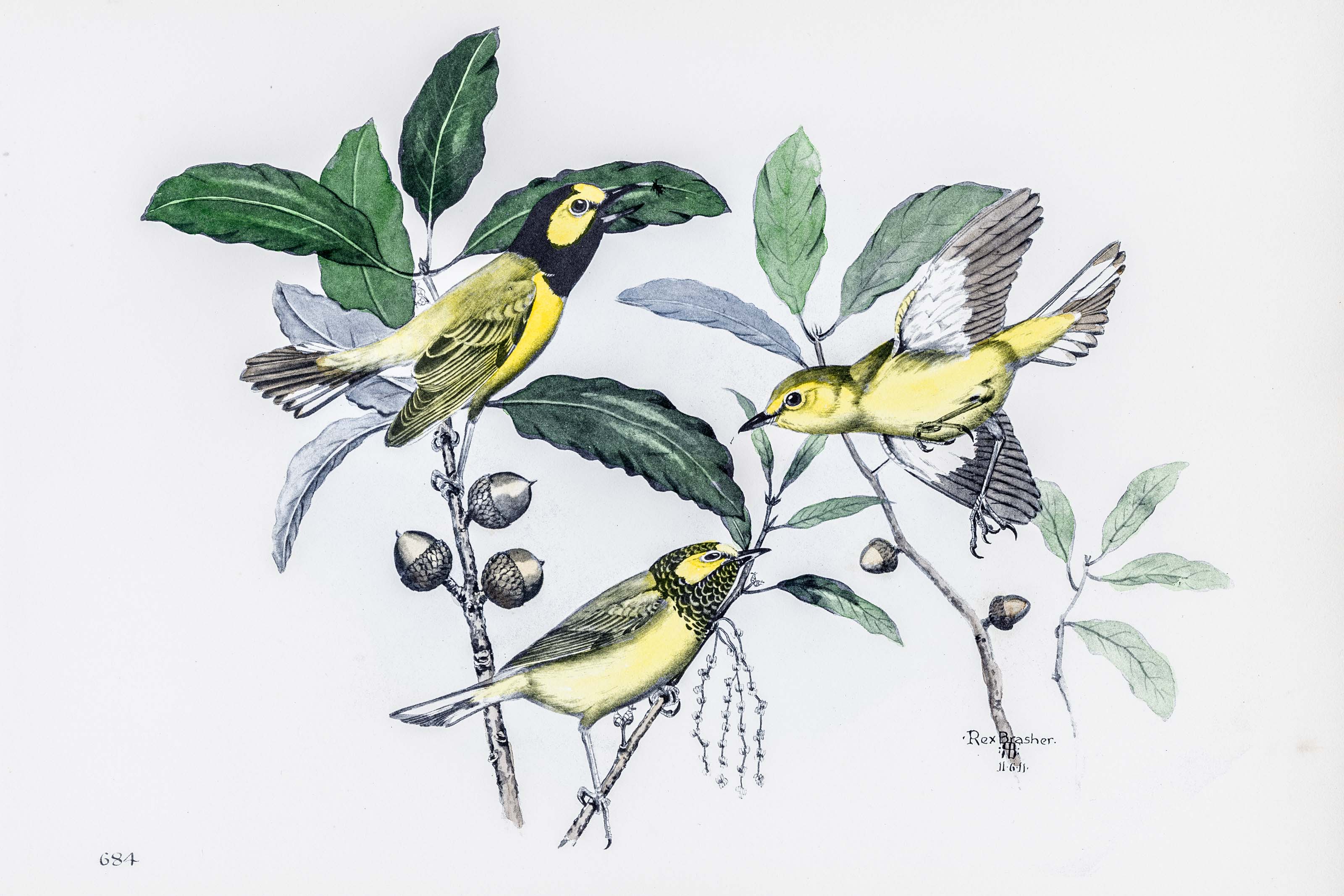
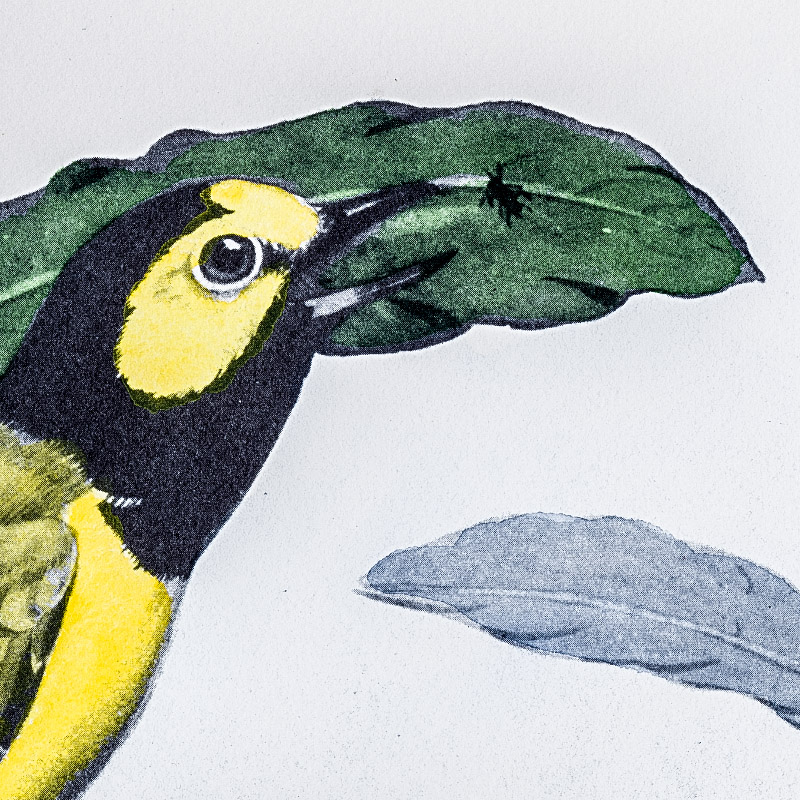
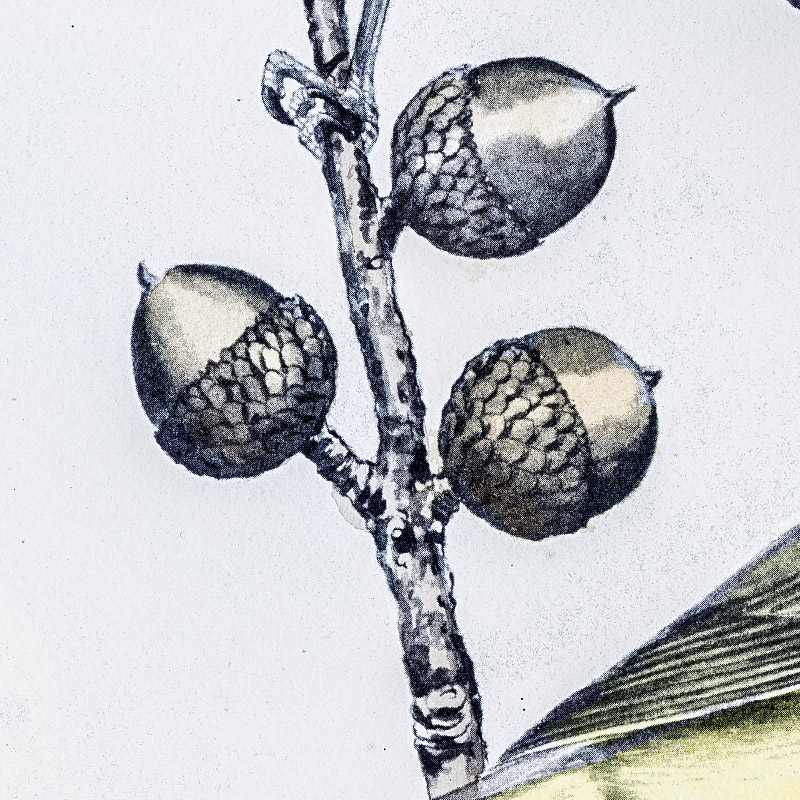
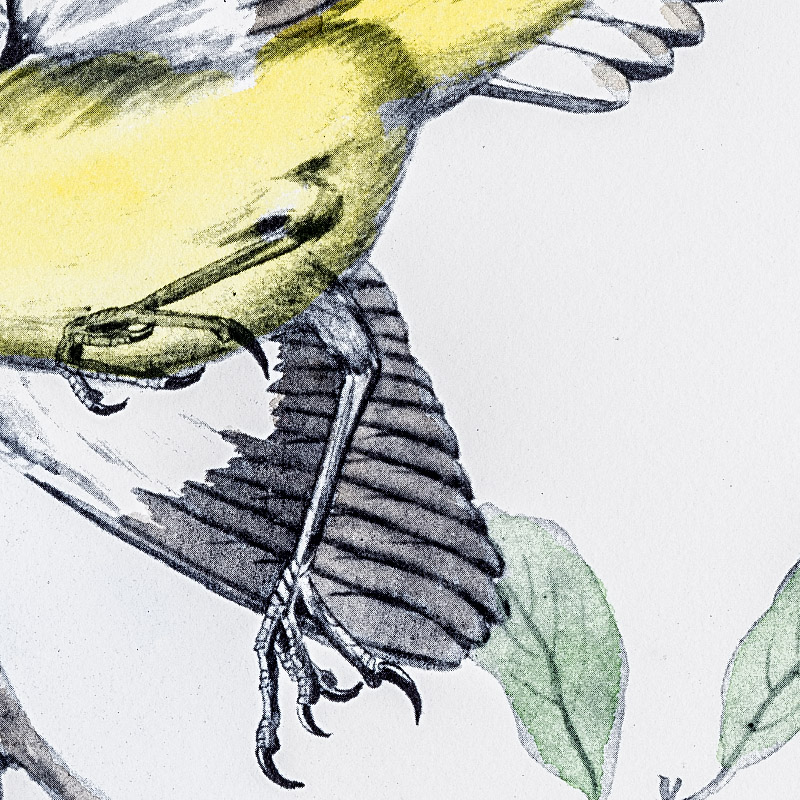
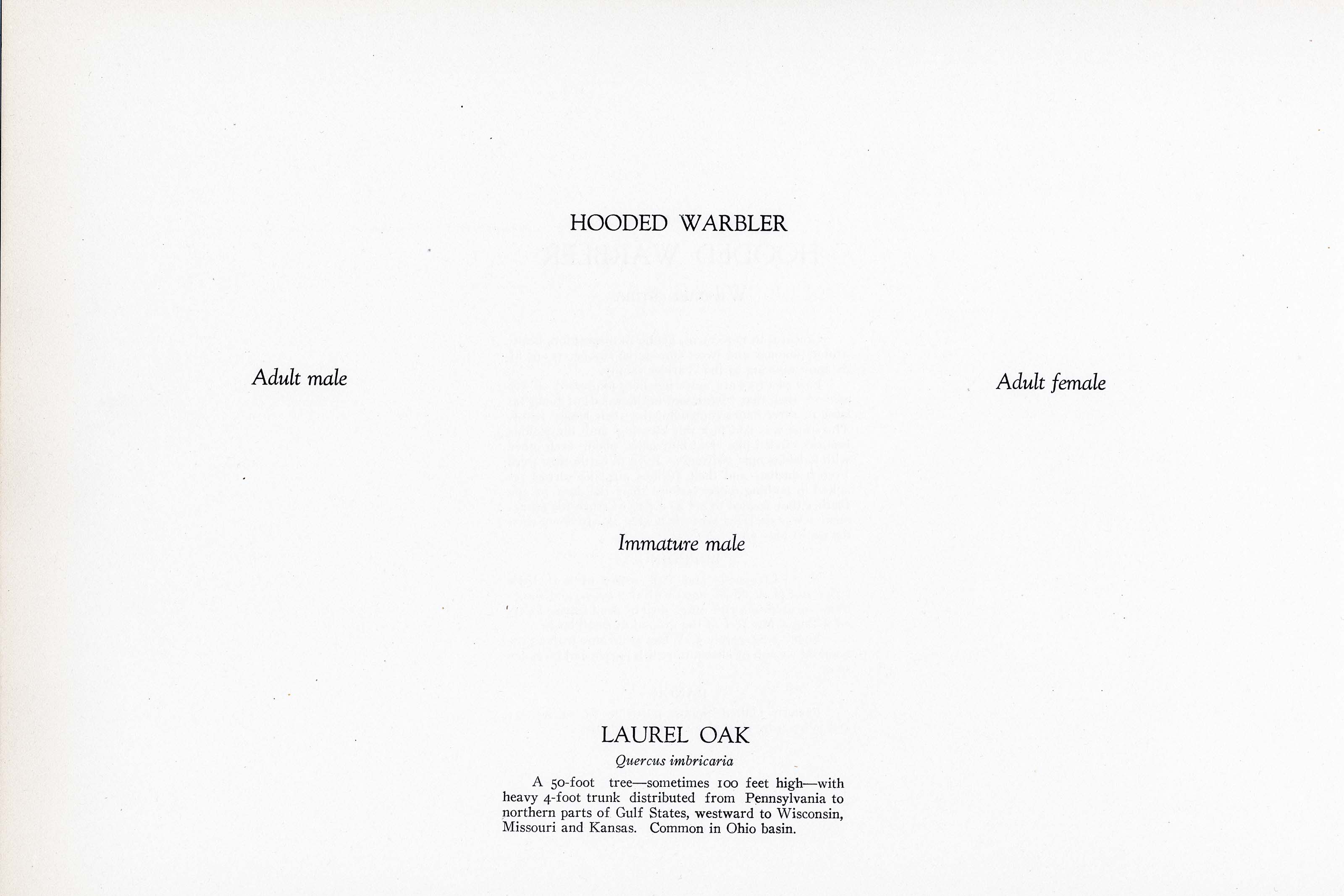
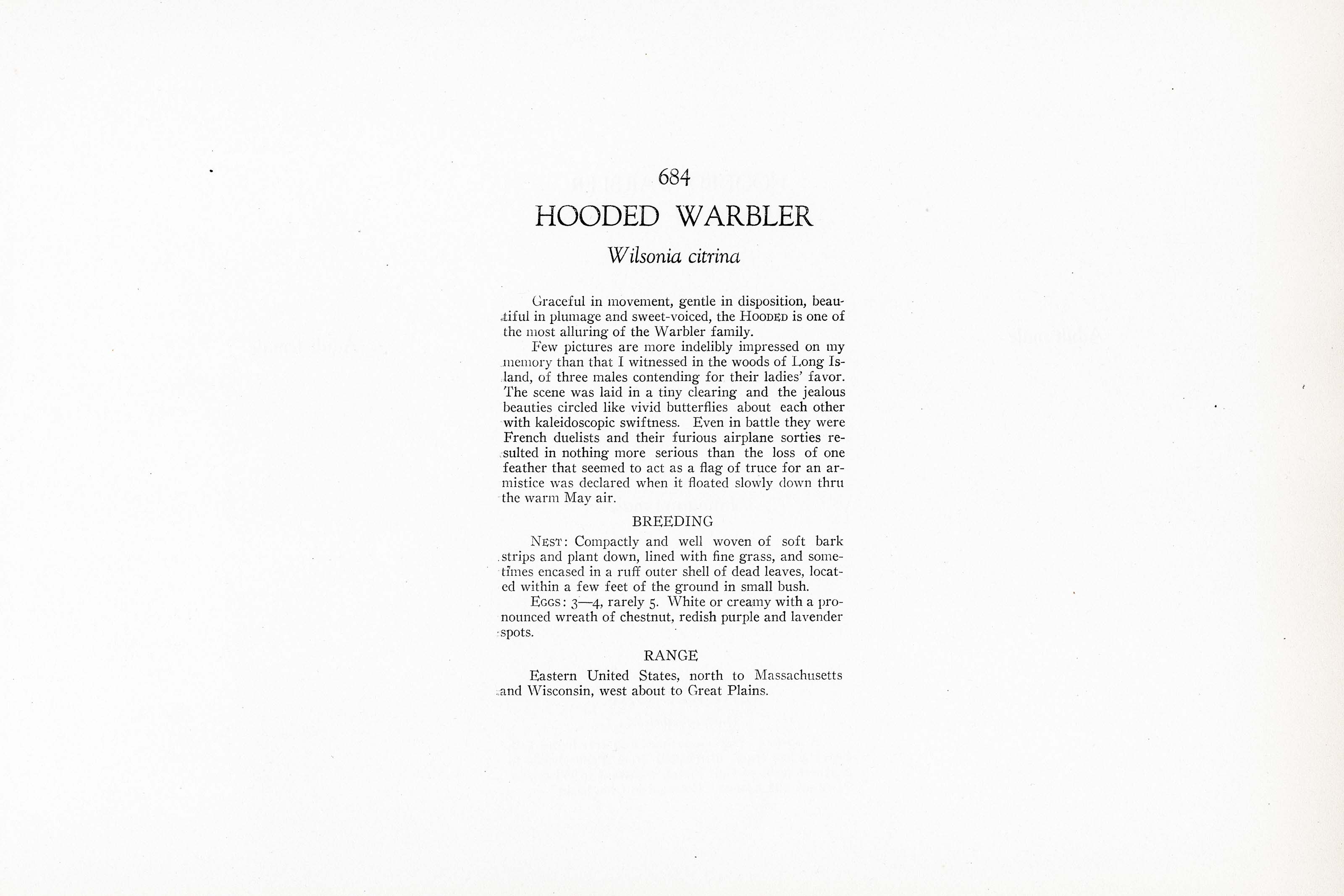

1911
1930
11
684
A team of dedicated board members, volunteers, and student interns has published every page in Volume 9. This volume includes 360 images of paintings and lyrical descriptions of birds, now available online for everyone to enjoy anywhere in the world. This is a monumental task. Each volume requires approximately 400 hours to photograph, edit, transcribe, catalog, and publish online. We need your support to complete this work.
If you're tech-savvy, have a good eye, are meticulous with details, and love structured data, please consider volunteering by emailing us at hello@rexbrasher.org.
We encourage all bird lovers and supporters to consider a monetary donation to support our mission to make Rex's work available for everyone. You can provide a one-time or recurring donation online.
Graceful in movement, gentle in disposition, beautiful in plumage and sweet-voiced, the HOODED is one of the most alluring of the Warbler family.
Few pictures are more indelibly impressed on my memory than that I witnessed in the woods of Long Island, of three males contending for their ladies' favor. The scene was laid in a tiny clearing and the jealous beauties circled like vivid butterflies about each other with kaleidoscopic swiftness. Even in battle they were French duelists and their furious airplane sorties resulted in nothing more serious than the loss of one feather that seemed to act as a flag of truce for an armistice was declared when it floated slowly down thru the warm May air.
NEST: Compactly and well woven of soft bark strips and plant down, lined with fine grass, and sometimes encased in a ruff outer shell of dead leaves, located within a few feet of the ground in small bush.
EGGS: 3–4, rarely 5. White or creamy with a pronounced wreath of chestnut, redish purple and lavender spots.
Eastern United States, north to Massachusetts and Wisconsin, west about to Great Plains.
A 50-foot tree—sometimes 100 feet high—with heavy 4-foot trunk distributed from Pennsylvania to northern parts of Gulf States, westward to Wisconsin, Missouri and Kansas. Common in Ohio basin.